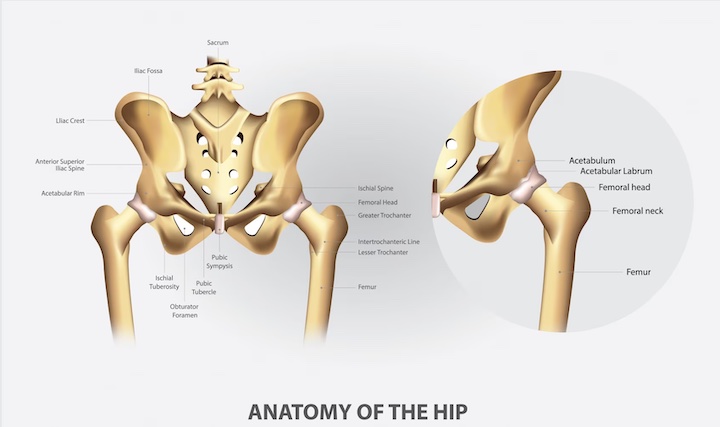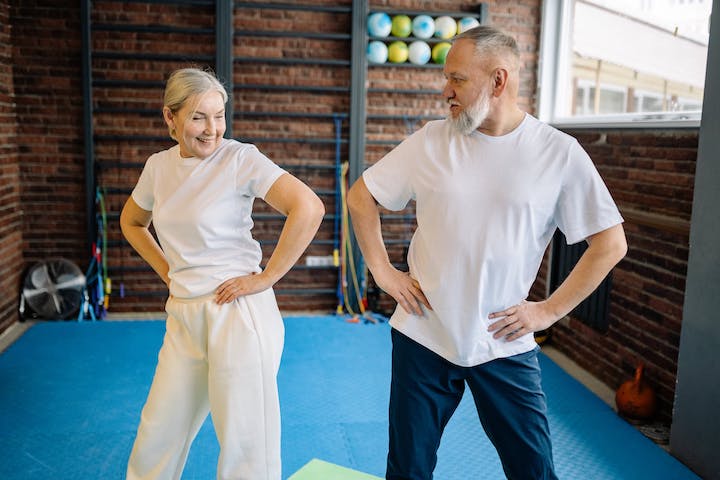Greater Trochanteric Pain Syndrome (GTPS) is a condition that causes chronic pain and tenderness in the area around the greater trochanter, which is the bony bump on the outside of your hip. It can make simple activities like walking, climbing stairs, or even lying down on your side extremely painful.
GTPS can be caused by various factors such as overuse injuries, trauma, or inflammation of the tendons and bursae in the hip region. To diagnose GTPS, your healthcare provider may perform tests and examinations, such as X-rays or MRI scans.
Fortunately, non-surgical treatment options, including physical therapy, medication, and lifestyle modifications, can help alleviate the pain. In some cases, surgical interventions may be necessary to provide long-term relief.
By understanding the symptoms, causes, and treatment options for GTPS, you can take proactive steps to manage and prevent this debilitating condition.
The Greater Trochanteric Pain Syndrome feels like a searing hot poker stabbing into your hip with every step you take. It can be a debilitating condition that affects your daily activities and mobility.

Photo Credit: PongPongChing, Freepik
GTPS, also known as GTPS hip, is characterized by pain and tenderness around the greater trochanter of the femur, which is the bony prominence on the side of your hip. The pain can radiate down the side of your leg and may worsen with activities such as walking, running, or climbing stairs.
Although the exact cause of GTPS is unknown, it is often attributed to inflammation of the tendons or bursa in the hip region.
Treatment options for GTPS include rest, physical therapy, GTPS exercises, and hip pain management techniques. It is important to seek medical attention if you’re experiencing GTPS pain to receive a proper diagnosis and treatment for this syndrome.
Recognizing the GTPS symptoms can feel like a puzzle as you try to piece together the clues of hip discomfort and tenderness on the outside of your upper leg. To help you navigate through this puzzle, here are four key symptoms to look out for:
By recognizing these symptoms, you can take the first step towards seeking proper diagnosis and treatment for GTPS.
To better understand what may be causing your discomfort and tenderness on the outside of your upper leg, let’s explore some common factors that can contribute to this condition.
Greater trochanteric pain syndrome (GTPS) can be caused by a variety of reasons. One of the most common causes is inflammation in the tendons that attach to the greater trochanter, which is a bony prominence on the outside of the hip. This inflammation can be due to overuse or repetitive activities such as running or jumping.
Another common cause is trauma or injury to the hip, such as a fall or direct blow to the area. Additionally, muscle imbalances or weakness in the hip and gluteal muscles can also contribute to the development of GTPS.
Identifying and addressing these common causes is important to manage and treat greater trochanteric pain syndrome effectively.
Let’s dive into how GTPS is diagnosed through tests and examinations. To accurately diagnose GTPS, medical professionals often use a cluster of tests and examinations. Here are four key diagnostic methods commonly used:
By utilizing these tests and examinations, medical professionals can accurately diagnose GTPS and develop an appropriate treatment plan for you.
One effective way to manage GTPS is through non-surgical treatment options. If you’ve been diagnosed with GTPS, physiotherapy can be a helpful approach to alleviate your pain.
A physiotherapist can guide you through specific exercises that target the muscles and tendons around your greater trochanter, which is the main source of pain in GTPS. These exercises may include stretching, strengthening, and stabilizing movements that can improve your overall hip function and reduce discomfort.

Photo Credit: Racool Studio, Freepik
It’s important to follow a structured exercise program tailored to your individual needs, and a physiotherapist can provide you with a GTPS exercises PDF to guide you in your home exercises. By consistently doing these exercises for GTPS, you can improve your symptoms and enhance your quality of life without the need for surgery.
If you’re looking for a more long-term solution to your hip discomfort, surgical options can be considered for treating GTPS. Surgical interventions for GTPS are typically recommended when non-surgical treatments haven’t provided sufficient relief.
Several surgical procedures can address GTPS, including trochanteric bursectomy, gluteus medius repair, and iliotibial band release. Trochanteric bursectomy involves the removal of the inflamed bursa, which can help alleviate pain and improve mobility. In cases where the gluteus medius tendon is damaged or torn, repair surgery may be necessary.
Iliotibial band release is another surgical option that involves releasing the tight iliotibial band to relieve pressure on the greater trochanter. It’s essential to consult with a healthcare professional to determine the most appropriate surgical intervention for your specific case of GTPS.
Rehabilitation and physical therapy are essential components of the treatment plan for GTPS, helping to improve hip function and alleviate discomfort. Regarding GTPS, rehabilitation and physical therapy are crucial in the treatment process.
These interventions aim to address the condition’s underlying causes and improve hip function through targeted exercises and treatments. Physical therapists often focus on strengthening the hip and surrounding muscles and improving flexibility and range of motion. They may incorporate hip abductions, lateral leg raises, and clamshells to target specific muscle groups.
Additionally, manual therapy techniques, such as soft tissue mobilization and joint mobilization, may be utilized to reduce pain and improve joint function.
Overall, rehabilitation and physical therapy are integral in the comprehensive treatment of GTPS, offering patients a path towards recovery and improved quality of life.
To effectively prevent and manage Greater Trochanteric Pain Syndrome (GTPS), it’s crucial to incorporate targeted exercises and lifestyle adjustments into your daily routine.
One of the best ways to prevent GTPS is to strengthen the muscles surrounding the hip joint. Focus on exercises that target the gluteus medius and minimus, such as side-lying leg lifts and clamshells. These exercises help stabilize the hip and reduce stress on the trochanteric bursa.

Photo Credit: Yan Krukau, Pexels
Additionally, consider incorporating GTPS taping into your routine. This involves applying adhesive tape to the affected area to provide support and reduce pain.
Lastly, if you’re experiencing GTPS, it’s important to seek appropriate treatment. This may include physical therapy, medication, or injections to reduce inflammation and pain.
Overall, taking preventive measures and seeking proper treatment can effectively manage and alleviate the symptoms of Greater Trochanteric Pain Syndrome.
Greater trochanteric pain syndrome (GTPS) is typically caused by inflammation of the trochanteric bursa, a fluid-filled sac near the hip joint. This inflammation can be due to a variety of factors, including overuse injuries, direct trauma, or strain from repetitive movements, particularly in activities that involve running or climbing. It can also be associated with certain conditions such as hip osteoarthritis, lower back disease, or iliotibial band syndrome.
Treatment for greater trochanteric pain syndrome often involves a combination of rest, physical therapy, and pain management. Resting and avoiding activities that exacerbate the pain can help reduce inflammation. Physical therapy exercises can strengthen the hip and leg muscles, improve flexibility, and promote better movement patterns. Pain management may include over-the-counter pain relievers, corticosteroid injections, or in some cases, surgery.
Yes, with appropriate treatment, the symptoms of greater trochanteric bursitis can often be effectively managed and may go away completely. This typically involves a combination of rest, physical therapy, and pain management strategies. However, it’s important to note that recovery times can vary depending on the severity of the condition and the individual’s overall health.
Exercises that strengthen the hip and leg muscles can be beneficial for managing greater trochanteric pain syndrome. This might include exercises such as clamshells, hip bridges, and leg lifts. However, it’s important to perform these exercises under the guidance of a physical therapist or other healthcare professional to ensure they are done correctly and safely.
The primary symptom of greater trochanteric pain syndrome is pain on the outside of the hip, which can sometimes extend down the side of the thigh. The pain may be sharp or dull and worse during activities involving moving the hip, such as walking or climbing stairs. The hip area may also be tender to the touch.
While not all cases of greater trochanteric pain syndrome can be prevented, certain strategies may reduce the risk. These include maintaining a healthy weight, staying active, and incorporating strength training and flexibility exercises into your routine to keep the hip and leg muscles strong and flexible. Using proper form and technique when exercising or playing sports is important to avoid overuse or strain.